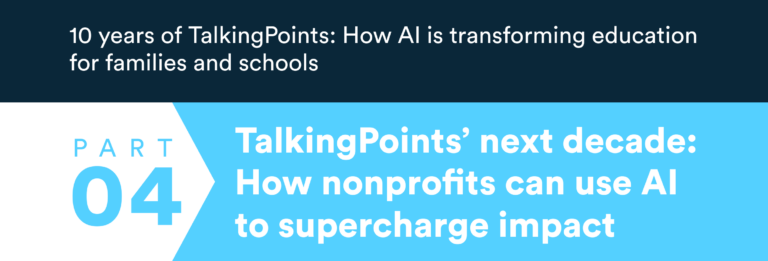Written by Kate Pechacek
When we hear the word “equity” in the context of schools, several predisposed thoughts likely arise. We may immediately think of disparities in outcomes among ESSA-defined student subgroups: How are students with disabilities faring compared to their peers? How do outcomes differ between students of color and white students? The politicization of ‘equity’ and how it can be perceived differently across states and rural, suburban, and urban settings may also come to mind. Rarely do we consider equity in terms of varying levels of support within families. Equally overlooked are the implications of inconsistent approaches to building relationships with all families in a district and how this can limit systemic improvement.
Deploying family engagement as a high-leverage strategy
Inequities can result when certain students receive support while others do not, irrespective of reasons or intentions–even within a family. These disparities significantly influence student outcomes, especially when the support relies on direct partnerships with families.
Research shows that effective family engagement is twice as predictive of students’ postsecondary success as their family’s socioeconomic status (Mapp & Henderson, 2002). The TalkingPoints platform is designed around research-based best practices in family engagement, including Dr. Karen Mapp of Harvard University’s The Dual Capacity-Building Framework for Family-School Partnerships. Dr. Mapp serves as a strategic advisor to the TalkingPoints organization. Further, TalkingPoints is purpose-built to adhere to four critical domains in family engagement best practices. Truly effective family engagement practices in schools and districts need to be:
- Purposeful – built intentionally to improve student outcomes
- Inclusive – universally designed to advance equitable access for all students and families
- Responsive – adapts to evolving best practices and new research findings
- Enduring – created consistency of experience for staff and families for impact that endures across teachers, schools, and years
An externally validated causal study shows that schools that used TalkingPoints as a family engagement solution in a large, diverse district saw significant improvements in student outcomes compared to schools that did not. All students in participating schools saw academic and attendance improvements, and gains were even more pronounced for traditionally underserved student groups.
To harness the potential of effective family engagement, districts and schools must implement it as a high-impact strategy for improving student outcomes rather than as a feel-good initiative in and of itself.
Why current family engagement practices fall short
Current family engagement practices fail to realize their full potential to drive student success as they often focus on leveling the communication playing field for underserved groups of students and their families. While well-intended, this approach can inadvertently exacerbate inequalities.
Title I funding aims to provide all children with significant opportunity to receive a fair and high-quality education and to close educational achievement gaps. In school districts, Title I funding is often allocated school-wide, where some schools qualify and others do not. Consequently, it is not uncommon for some children, but not all, within a family to receive Title I-funded support. When the support provided is intended for a family member but can only be used for some of their children, inefficiencies and disparities arise.
Title III funding is designed to enhance the education of English learners (ELs) by helping them in learn English and meet challenging state academic content and achievement standards. However, once a student exits from EL services, the funding for Title III-supported solutions may no longer be available. Consequently, when the support provided targets family members as users of the solution, a family member may find themselves without support, or the support may only be available for some of their children, not all.
When districts allocate Title monies to fund family engagement solutions, supplement vs. supplant laws restrict their use to specific categorical population groups. This can lead to unintended inequities within families and create disparities in experiences across classrooms, schools, and districts as students outside the supported categories are excluded. However, when districts prioritize building trusting relationships with all families—nurturing these bonds consistently over time—capacity grows on all sides. Families gain a deeper understanding of how to collaborate with schools to support their students, teachers feel more confident and supported in engaging with families, and student outcomes see marked improvement.
Title funds can help districts effectively pilot solutions, starting with historically underserved student groups or specific schools, before implementing them broadly to improve outcomes for all students. However, funding for universally effective solutions like TalkingPoints should ideally be integrated into general fund budgets. This approach ensures sustainable technology adoption, enabling high-leverage strategies that benefit all students equitably. Find more information here about how to fund TalkingPoints.



